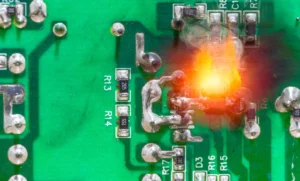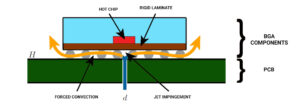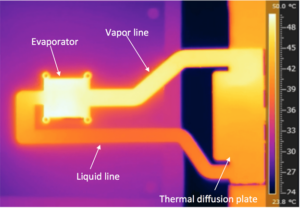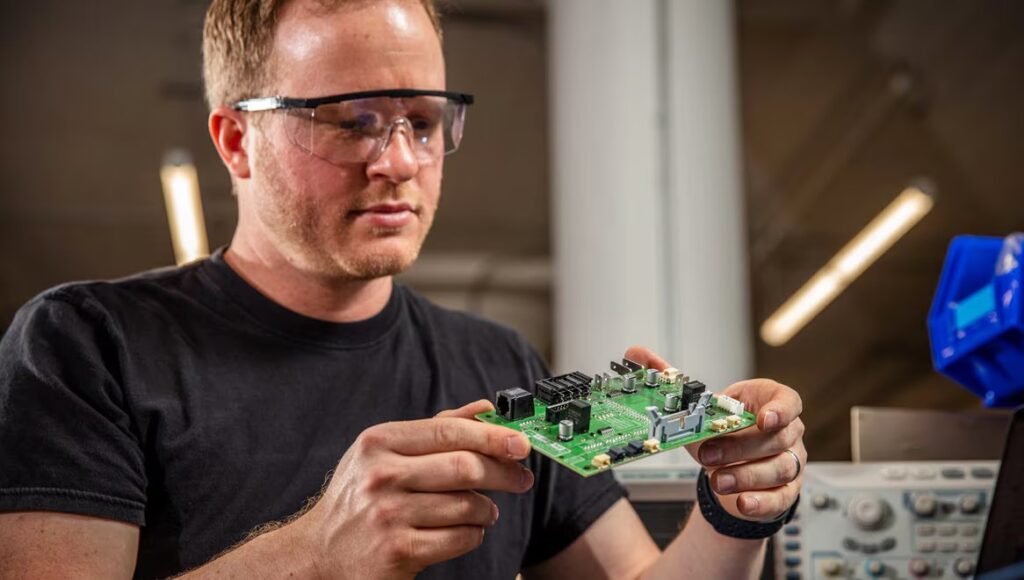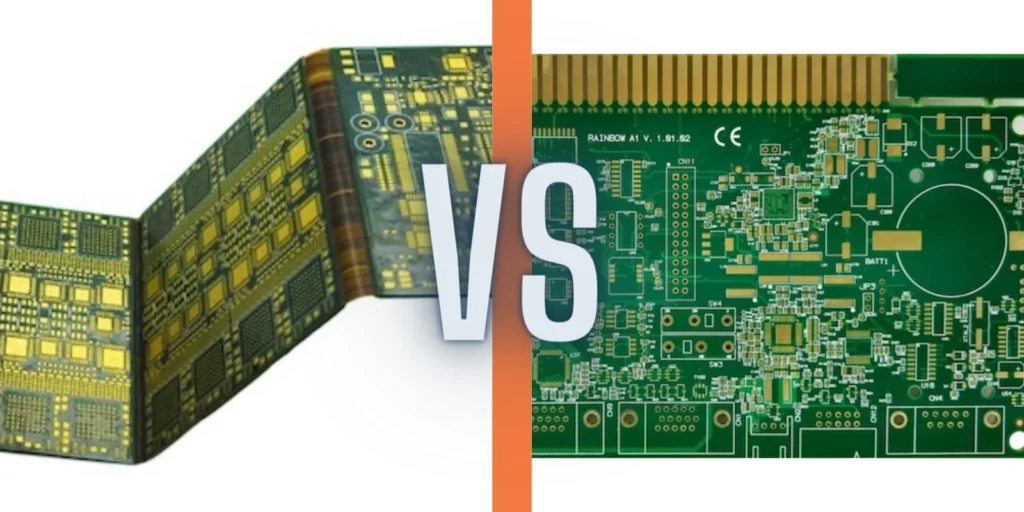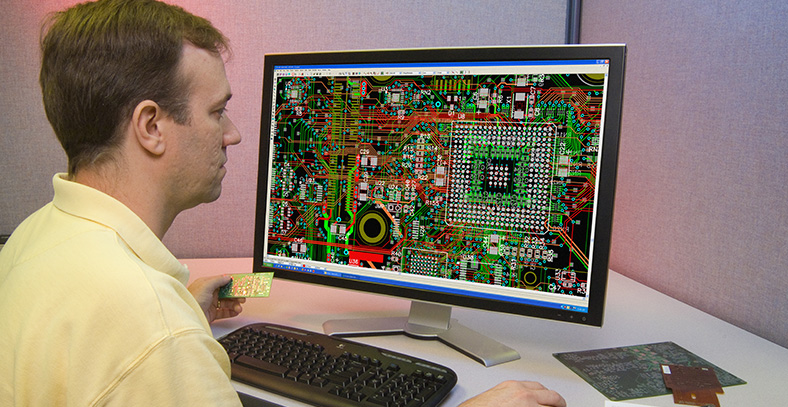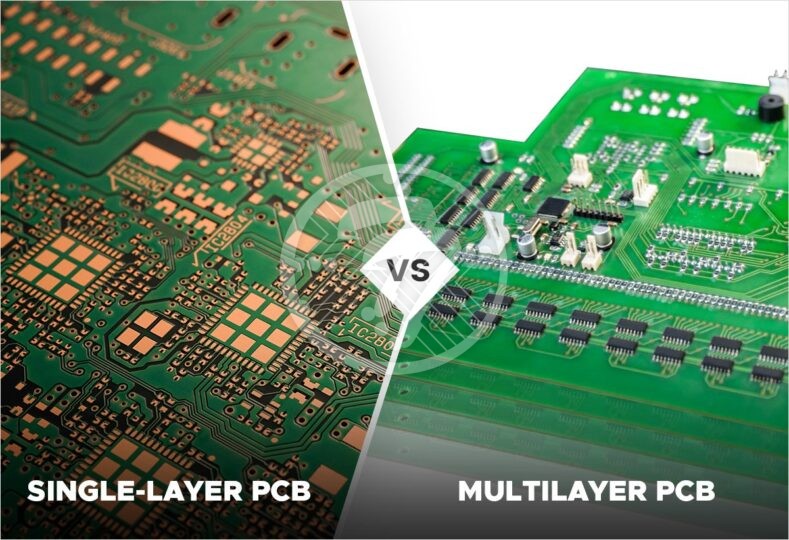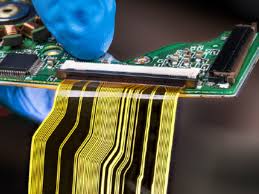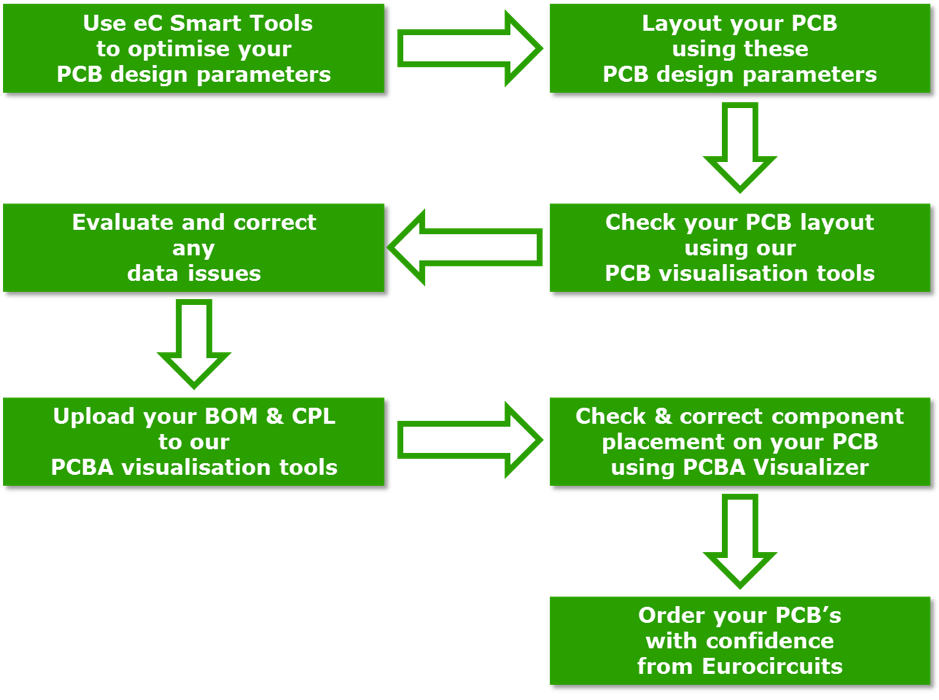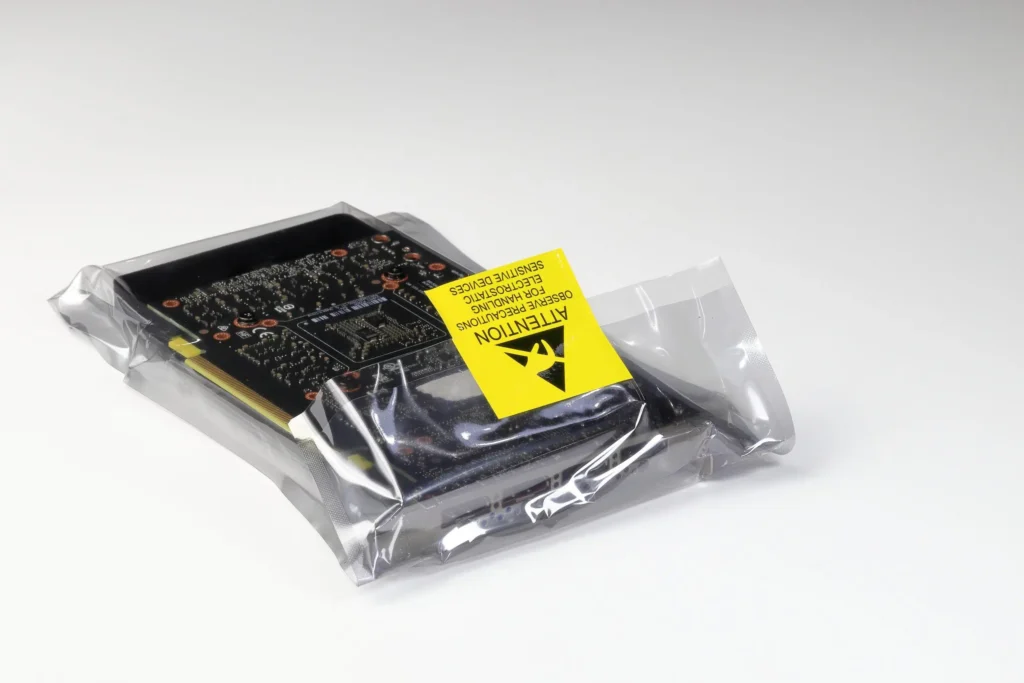PCB heat sink, for electronic devices, generates a certain amount of heat when working, thus causing the internal temperature of the device to rise rapidly, if this heat is not distributed in a timely manner, the device will continue to heat up, the device will fail due to overheating, and the reliability of the electronic device will be reduced. This is why it is so important to have a good heat dissipation process for your circuit board. PCB board heat dissipation is a very important part of the process, so what are the PCB board heat dissipation techniques, and let’s discuss them together below.
1. Heat dissipation through the PCB itselfThe widely used PCB boards today are copper-clad/epoxy glass cloth substrates or phenolic resin glass cloth substrates, and a small number of paper-based copper-clad boards are also used.
These substrates, while having excellent electrical properties and processability, have poor heat dissipation, and as a heat dissipation path for high heat generating components, little can be expected to be conducted by the resin of the PCB itself, but rather from the surface of the component into the surrounding air. However, as electronic products have entered the era of miniaturization of components, high density mounting, and high heat generation assembly, it is not enough to rely only on the surface area of very small components to dissipate heat. At the same time, due to the extensive use of surface mount components such as QFP and BGA, the heat generated by the components is transmitted to the PCB in large quantities, therefore, the best way to solve the heat dissipation is to improve the heat dissipation capability of the PCB itself which is in direct contact with the heat generating components, and to conduct it out or distribute it through the PCB.
PCB layout
a. Thermally sensitive devices are placed in the cold air area.
b. The temperature detection device is placed in the hottest position.
c. The devices on the same printed circuit board should be arranged in partitions according to their heat generation and heat dissipation levels as much as possible. Devices with low heat generation or poor heat resistance (such as small signal transistors, small-scale integrated circuits, electrolytic capacitors, etc.) are placed in the uppermost stream (at the entrance) of the cooling airflow, and devices with high heat generation or good heat resistance (such as power transistors, large-scale integrated circuits, etc.) are placed in the most downstream of the cooling airflow.
d. In the horizontal direction, high-power devices are arranged as close as possible to the edge of the printed circuit board in order to shorten the heat transfer path; in the vertical direction, high-power devices are arranged as close as possible to the top of the printed circuit board in order to reduce the impact of these devices on the temperature of other devices when operating.
e. Heat dissipation from printed circuit boards within a device relies heavily on air flow, so it is important to study the air flow paths during design and configure the device or printed circuit board appropriately. Air always tends to flow where there is less resistance when it flows, so when configuring devices on a printed circuit board, avoid leaving a large open area in a certain region. The same should be noted for the configuration of multiple printed circuit boards in the overall machine.
f. Devices that are more sensitive to temperature are best placed in the lowest temperature areas (such as the bottom of the device), never place it directly above a heat generating device, and multiple devices are best laid out staggered on a horizontal plane.
g. Arrange the devices with the highest power consumption and highest heat generation near the best locations for heat dissipation. Do not place devices that generate more heat in the corners and around the edges of the printed circuit board unless there is a heat sink arranged near it. When designing a power resistor, choose a larger device if possible, and adjust the layout of the printed circuit board so that it has enough room for cooling.
h, Component spacing recommendations:
2. High heat generating devices plus heat sink, thermal conductivity board When there are a few devices in the PCB with high heat generation (less than 3), heat sink or thermal conductivity tube can be added to the heat generating devices, and when the temperature still can not be lowered, a heat sink with fan can be used to enhance the heat dissipation effect.
When the amount of heat generating devices is high (more than 3), a large heat sink (board) can be used, which is either a dedicated heat sink customized to the location and height of the heat generating devices on the PCB or a large flat panel heat sink with different component heights keyed in. The heat sink is snapped onto the component surface as a whole, and each component is in contact with the heat sink. However, the heat sink is not effective due to the poor consistency of the height of the components when they are mounted and soldered. A soft thermal phase change pad is usually added to the component surface to improve heat dissipation.
- For devices with free convection air cooling, it is best to arrange the ICs (or other devices) in a longitudinal fashion, or in a long horizontal fashion.
4. Using a reasonable alignment design to achieve heat dissipation Since the resin in the board has poor thermal conductivity, and copper foil lines and holes are good conductors of heat, increasing the residual rate of copper foil and adding thermally conductive holes are the primary means of heat dissipation. Evaluating the heat dissipation capability of PCBs requires calculating the equivalent thermal conductivity (nine eq) of the composite material consisting of various materials with different thermal conductivity one by one for insulating substrates for PCBs.
5. The devices on the same printed circuit board should be arranged in partitions according to their heat generation and heat dissipation levels as much as possible. Devices with low heat generation or poor heat resistance (such as small signal transistors, small-scale integrated circuits, electrolytic capacitors, etc.) are placed in the uppermost stream (at the entrance) of the cooling airflow, and devices with high heat generation or good heat resistance (such as power transistors, large-scale integrated circuits, etc.) are placed in the lowermost stream of the cooling airflow.
6. In the horizontal direction, high-power devices are arranged as close as possible to the edge of the printed circuit board in order to shorten the heat transfer path; in the vertical direction, high-power devices are arranged as close as possible to the top of the printed circuit board in order to reduce the impact of these devices on the temperature of other devices when operating.
- Heat dissipation from printed circuit boards in devices relies heavily on air flow, so it is important to study the air flow paths and configure the device or printed circuit board appropriately when designing. Air always tends to flow where there is less resistance when it flows, so when configuring devices on printed circuit boards, avoid leaving a large open area in a certain region. The same applies to the configuration of multiple printed circuit boards in a complete machine.
8. Devices that are more sensitive to temperature are best placed in the area of lowest temperature (such as the bottom of the device), never place it directly above a heat generating device, and multiple devices are best laid out staggered on a horizontal plane.
9. Place the highest power and heat generating devices near the best locations for heat dissipation. Do not place devices that generate more heat in the corners and around the edges of the printed circuit board unless there is a heat sink arranged near it. When designing a power resistor, choose a larger device if possible, and adjust the layout of the printed circuit board so that it has enough room for cooling.
10. Avoid the concentration of hotspots on the PCB and distribute power as evenly as possible across the PCB to maintain uniform and consistent temperature performance on the PCB surface. It is often more difficult to achieve a strict uniform distribution during the design process, but it is important to avoid areas of too high power density to avoid excessive hot spots that can affect the normal operation of the entire circuit.

